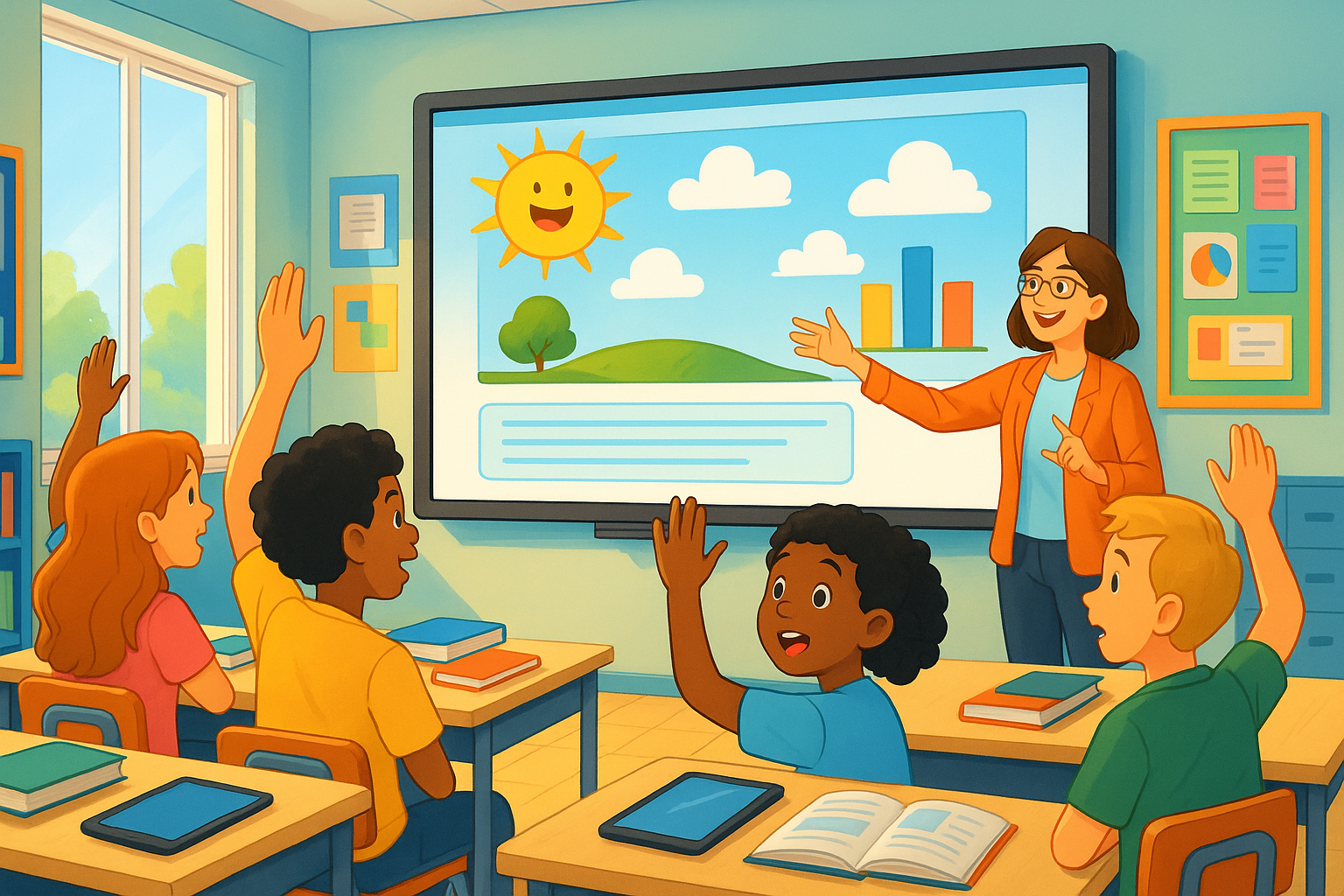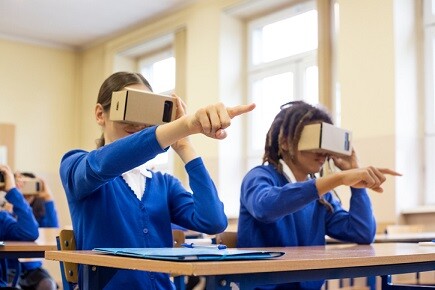Enhancing Education Through Classroom Technology & EdTech Tools
Introduction Remember when classroom technology meant overhead projectors and bulky desktop computers? We've come a long way since then! Educational...
You must be logged in to the LATechNet portal to view additional resources.
2 min read
 Aria - LATechNet Team
:
Aug 7, 2025 10:39:47 AM
Aria - LATechNet Team
:
Aug 7, 2025 10:39:47 AM

Interactive whiteboards (often called IWBs) are big touch-sensitive screens that connect to a computer and projector, letting you write, draw, and move things around right on the board. Think of them as a giant tablet for the whole class! IWBs first started showing up in classrooms in the late 1990s, and over the years, they've become common in schools all over the world. Teachers and students both love them because they make lessons more hands-on and fun.
In this article, we're going to look at how interactive whiteboards are changing the way teachers teach and students learn. We'll see how these amazing boards help everyone get involved, make lessons more exciting, and even help teachers be more effective in their classrooms.
Interactive whiteboards (IWBs) have truly changed the way teachers and students connect in the classroom. First, they boost whole-class engagement—everyone gets in on the action, not just the front-row kids. With IWBs, teachers can switch things up on the fly, making lessons more dynamic and tailored to students' needs (Smith et al., 2006). Plus, these tools encourage collaborative learning, so students are more likely to participate and share ideas (Slay et al., 2008).
What’s more, IWBs make lessons more exciting. Touch screens, drag-and-drop activities, and multimedia clips keep students’ attention locked in (Higgins et al., 2007). Kids can even come up and interact with the board themselves, which sparks genuine enthusiasm (Slay et al., 2008).
The real magic happens when teachers use videos, images, and diagrams to explain tricky concepts. IWBs make this a breeze and help cater to all kinds of learners (Higgins et al., 2007; SMART Technologies). Visuals and instant feedback help students understand and remember more.
Teachers have seen real improvements, especially in reading and math. IWBs help break down tough topics and let students learn by doing, leading to better scores and more confident learners (Ofsted, 2005/2008; SMART Technologies).
Finally, the flexibility of IWBs helps teachers manage the classroom more smoothly, moving between activities and keeping everyone involved (Smith et al., 2006). Case studies show students are more engaged and teachers feel their classrooms have been truly transformed (SMART Technologies).
When it comes to making interactive whiteboards a breeze in the classroom, LATechNet is like having a tech-savvy friend by your side. Their team specializes in IT services made just for schools, so they know exactly what teachers and students need. LATechNet doesn’t just install interactive whiteboards—they help pick the right one for your school, set it up, and make sure it works perfectly every day.
They also offer hands-on training for teachers, so everyone feels confident using new tools and exploring fresh ways to teach. And if anything ever goes wrong, their support team is ready to help right away. LATechNet keeps everything updated and running smoothly, so learning isn’t interrupted. By partnering with schools, they help turn classrooms into exciting digital spaces where everyone can learn and grow together.
Interactive whiteboards (IWBs) have truly changed the way we teach and learn. They make lessons more engaging, spark motivation in students, and help everyone remember what they've learned a little better. With all these benefits, it’s no wonder students often achieve more when IWBs are part of the classroom experience.
But even the best tools need good planning and support. Making the most out of IWBs takes thoughtful training and ongoing help, so teachers feel confident using them every day. When schools work closely with technology partners like LATechNet, they can really unlock the power of IWBs. Let’s keep exploring new ways to use technology so every student has the best chance to succeed!

Introduction Remember when classroom technology meant overhead projectors and bulky desktop computers? We've come a long way since then! Educational...

This article explores the growing impact of AI in K-12 education, focusing on how it enables personalized learning tailored to each student's needs....

Schools face new challenges that require innovative solutions, like data analytics, to improve student performance. By collecting and analyzing data...